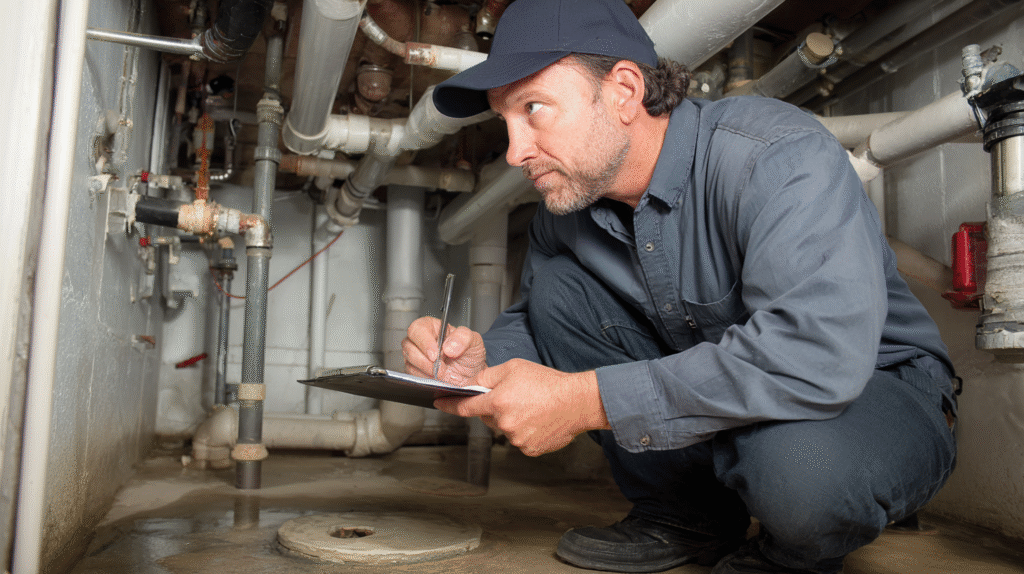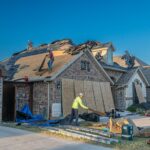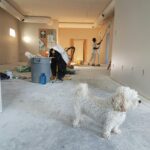Many homes in older Las Vegas neighborhoods still rely on original clay or cast iron sewer pipes, which are prone to cracks, root intrusion, and collapse. These aging systems, combined with shifting desert soil, often lead to expensive problems that surface during inspections—surprises that can derail a sale or burden homeowners with unexpected repair bills.
A working sewer system is essential to keeping homes healthy and livable, especially in a city where infrastructure varies widely across neighborhoods. Understanding common sewer issues before buying—or even as a current owner—can help avoid costly repairs and protect long-term property value.
Cracked Sewer Pipes That Lead To Hidden Yard Flooding
Cracked sewer pipes are a frequent issue during inspections, especially in older neighborhoods like Paradise and Spring Valley. Many homes in those areas still rely on aging clay or cast iron pipes, which gradually weaken under environmental stress. Even small cracks can cause yard flooding or allow unpleasant odors into the house—minor damage that often signals bigger trouble ahead.
Addressing problems early helps prevent costly repairs down the line. Understanding the condition of sewer lines gives buyers a clearer picture of the home’s actual state. A thorough inspection, supported by experienced Las Vegas plumbers, helps identify concerns, plan targeted fixes, and protect long-term property value.
Tree Root Invasions That Choke Sewer Flow
Homes with large or fast-growing trees nearby face a common issue: roots getting into sewer lines. As roots grow, they can break into the pipes, blocking the flow and sometimes even causing backups or serious clogs. This is especially common in older pipes that haven’t been regularly maintained. If not caught early, root problems can get expensive to fix.
Catching root issues early is key to avoiding major damage. Regular inspections help spot signs of root intrusion before the problem gets out of hand. Homeowners can reduce the risk by keeping sewer lines accessible and being mindful of where trees are planted.
Bellied Sewer Lines That Trap Wastewater
A bellied sewer line means the pipe has sagged, usually due to poor soil compaction or ground movement. Dips in the pipe create pockets where water collects, which can lead to slow drains and lingering smells inside the home. Low spots like this are difficult to detect without the right equipment, but a video inspection can pinpoint the location of the sag and show how severe the issue is.
Keeping an eye on sewer lines and being aware of the risk of bellies can help people act quickly if something seems off. Hiring professionals to check the system can catch hidden problems early, helping people avoid bigger costs and improving comfort in the home.
Offset Pipe Joints That Trigger Frequent Blockages
When sewer pipes shift out of place, they create gaps where waste builds up and flow slows down. Older homes, especially those built before modern standards, are more likely to have misaligned joints due to outdated materials and soil movement over time. Even minor shifts can lead to recurring clogs, foul odors, and plumbing backups—especially when multiple fixtures run at once.
Spotting alignment problems during an inspection allows for targeted repairs before damage worsens. Knowing the condition of each joint helps buyers and homeowners avoid surprise blockages and make informed decisions about future maintenance or renovations.
Collapsed Sewer Lines That Render Plumbing Systems Unusable
A collapsed sewer line is a serious issue that can shut down a home’s entire plumbing system. Over time, pipes corrode, and ground movement can weaken the structure. When a collapse occurs, drains slow down and the ground may even sink in certain spots—both are major red flags during an inspection. If the line has already given way, repairs might involve replacing the entire system, which is a significant undertaking.
Identifying problems like this early allows for better decision-making. An experienced inspector can evaluate the sewer system’s condition and detect any signs of collapse or structural weakness. Regular inspections help reveal potential risks in advance, making it easier to address them before costs and damage escalate.
Sewer issues are more common than most buyers realize—especially in older Las Vegas neighborhoods. Cracked pipes, root invasions, sagging lines, misaligned joints, and collapses can cause serious disruptions and lead to major expenses. A video inspection provides clarity before problems escalate, offering a clear view of the system’s condition. Ignoring sewer inspections during the homebuying process can result in unpleasant surprises and steep repair bills. Taking the time to evaluate the system now protects long-term comfort, safety, and investment. In a city with aging infrastructure and shifting soil, checking the sewer line is one of the smartest steps to take.






